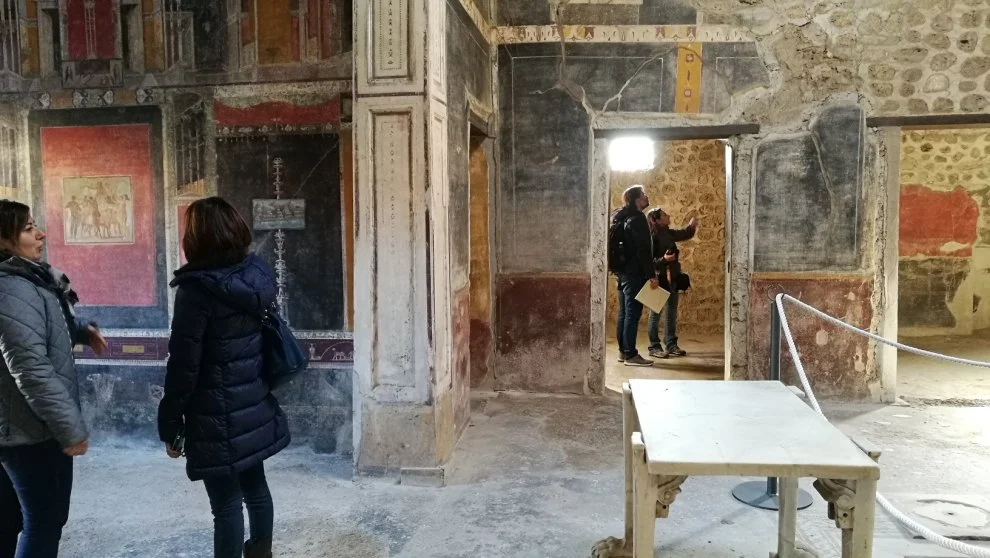As of this week, visitors to the newly restored house of Obelius Firmus in the ancient city of Pompeii will be greeted by giant coffer in bronze and iron dented by lapilli (red-hot volcanic stones) from the 79 AD eruption of Mt Vesuvius.

were found, is located in Regio V [Credit: Riccardo Siano]
Archaeologists found the remains of five people who tried to find shelter from the volcanic eruption inside this domus (residence) owned by a local aristocratic family, which exhibited its wealth by decorating the entry hall with an imposing safe that could be admired from the street.
Another sumptuous home restored ahead of the holidays, when visitors will be flocking to the archaeological site, is the home of Marcus Lucretius Fronto, where the remains of five adults and three children were discovered.
The house has stunning frescoes, including a wall painted black and with little pictures portraying seaside villas, cupids, scenes of Bacchus and Ariadne, Venus and Mars, Narcissus, and Pero breast-feeding her elderly father Cimon to save his life, with a couplet that recites: "Sad modesty mixed with pity".

The owners of the residence decorated what was probably their children's bedroom with their portraits beside the door.
The owner's room features a fresco of Ariadne giving Theseus her famous thread, while the garden walls are decorated with hunting scenes with lions, panthers, bears, bulls, oxen and horses.
A painting in which Neoptolemus is killed by Orestes in front of the temple of Apollo at Delphi is on display in the dining hall, which has been reopened to visitors.
The small Lupanar (brothel) is the third attraction for tourists.It has been renovated inside the structure that was also probably a restaurant where prostitutes worked. The room features four erotic frescoes and the windows were walled up to ensure privacy.
The floor of a home that was probably abandoned after an earthquake in 62 AD has also been found by archaeologists in the Regio IX, Insulae 3, that was originally used by Pompeii residents as a dump for construction materials.
Archaeologist Giuseppe Fiorelli originally discovered the dump in the mid-1800s during excavation work.

The floor was among restoration work carried out as part of the 105-million-euro Great Pompeii Project funded by the European Commission, aimed at safeguarding this UNESCO World Heritage site.
Nearby, a bakery (pistrinum) was found, that was later converted into a clothing cleaning area (fullonica).
A bomb in 1943 destroyed the street's pavement, which has also been restored by archaeologists working for the Great Pompeii Project.
Author: Rosa Benigno | Source: ANSA [December 10, 2016]